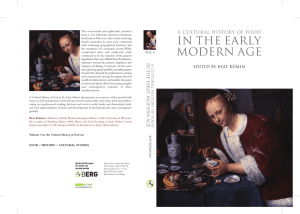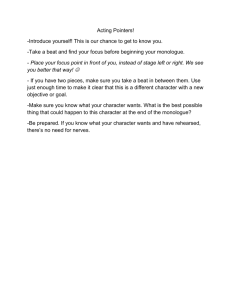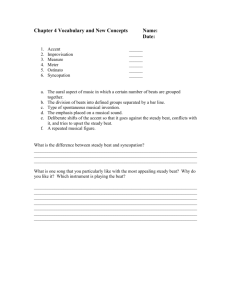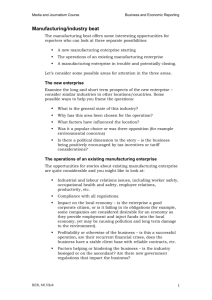Practice Problem 0451
advertisement
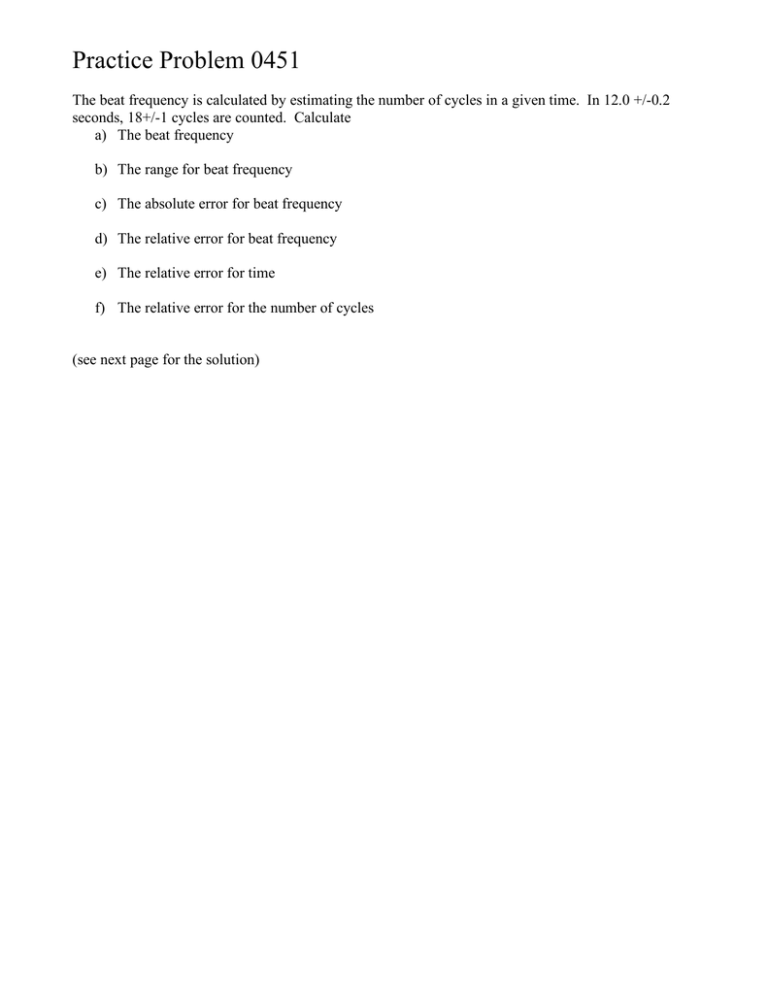
Practice Problem 0451 The beat frequency is calculated by estimating the number of cycles in a given time. In 12.0 +/-0.2 seconds, 18+/-1 cycles are counted. Calculate a) The beat frequency b) The range for beat frequency c) The absolute error for beat frequency d) The relative error for beat frequency e) The relative error for time f) The relative error for the number of cycles (see next page for the solution) a) To determine beat frequency, we use the following equations bf = N Δt N represents the number of beats, (N = 18) in 12 seconds bf = 18 12 bf = 1.5 Hz b) To determine the range, initially we need to calculate the range for each variable 11.8 ≤ Δt ≤ 12.2 seconds (added/subtracted the absolute error of 0.2 seconds to the measurement of 12 seconds) 17 ≤ N ≤ 19 seconds (added/subtracted the absolute error of 1 cycle to the measurement of 18 cycles) bfH = 19 = 1.61 Hz 11.8 1.39 ≤ bf ≤ 1.61 Hz c) The absolute error for beat frequency absolute error = 1.61 - 1.39 = 0.11 Hz 2 bfL = 17 = 1.39 Hz 12.2 d) The relative error for beat frequency relative error = absolute error 0.11 = = 0.0733 measurement 1.5 e) The relative error for time relative error = absolute error 0.2 = = 0.0166 measurement 12 f) The relative error for the number of cycles relative error = absolute error 1 = = 0.0555 measurement 18 Note the relative error for time added to the relative error for number of cycles is almost equal to the relative error for beat frequency. This is a method one can use to verify that their error analysis is correct.
